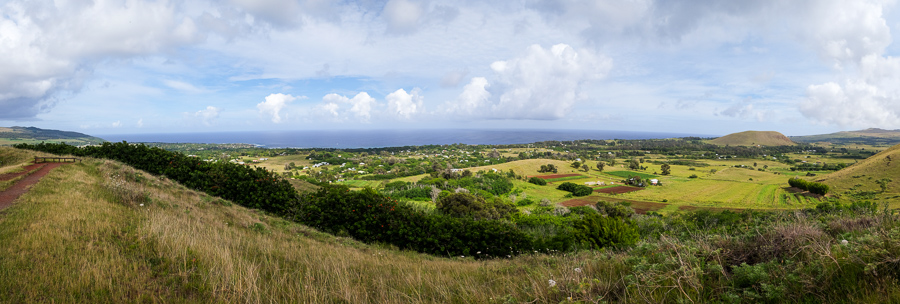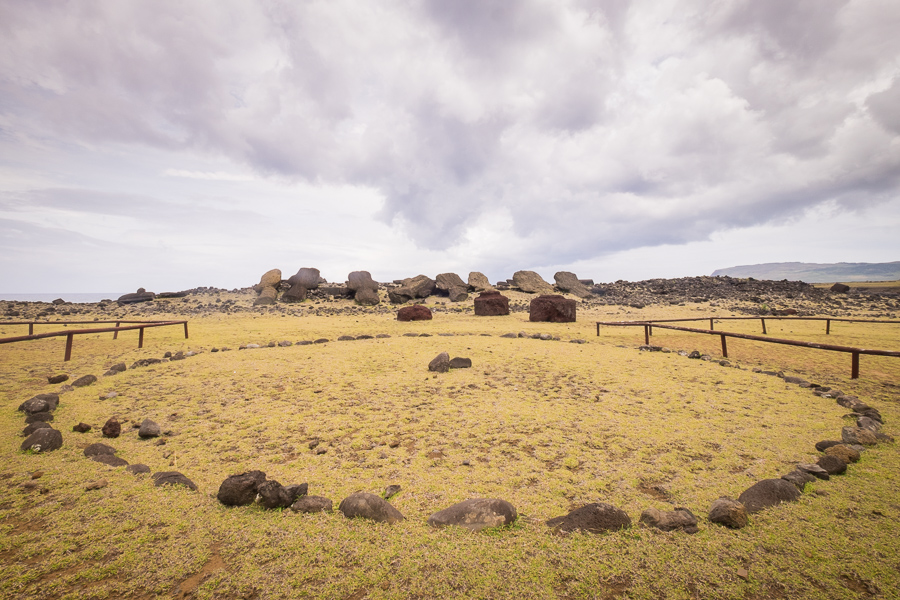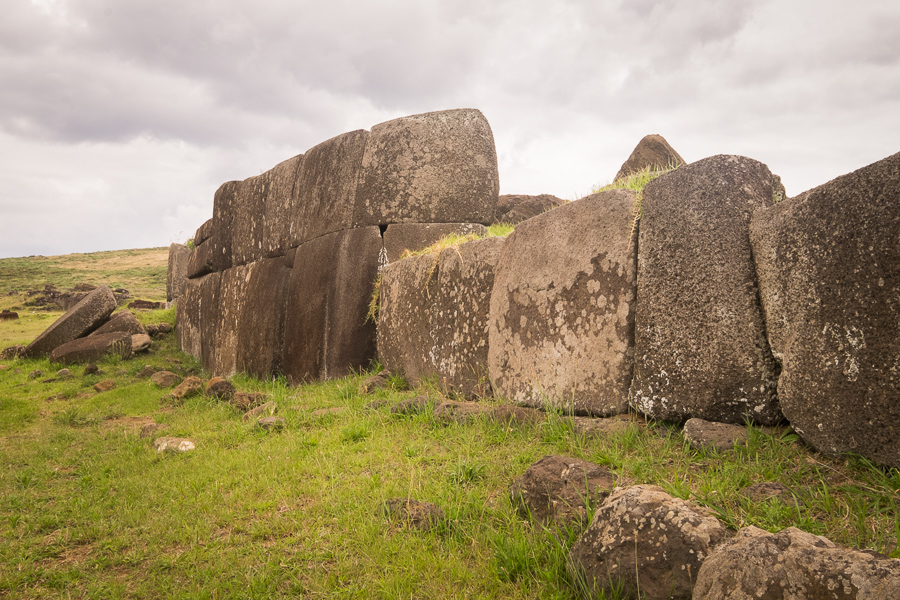Back on the e-Bike today but not as much riding 🙂 First stop – Puna Pau – where they quarried the red basalt for the topknots (pukaos).

It is thought that these represented hair rather than hats, and seem to be very late additions to the Moais (only a fraction of the Moais actually have them). It’s also uncertain whether the rolled the pukaos up ramps once they Moai were in place, or whether they were attached to the Moai before raising the statue on the platform.

The ones here are cylindrical and remain unfinished, lacking the smaller topknot and the mechanism to attach to the Moai’s head. These would have been added once the pukao was in its final destination.

The added bonus of this site is the fantastic view back over Hanga Roa and the western coast of Easter Island.

Got a bit lost on the way to Ana Te Pahu (another lava-tube cave) and ended up heading back into Hanga Roa. Backtracked and found it eventually – thank you e-Bike for making those hills I really shouldn’t have had to ride up a breeze!
From the National Parks checkpoint, the Guardaparque told me I could ride down to the cave, so that’s what I attempted. Yeah – or not! Ended up walking the bike most of the way (e-Bikes are not designed for dirt roads!) and had a quick lesson on putting a chain back on the front cog when I got back to the checkpoint. It is true, these bikes are super-heavy, and NOT fun to push.

Next stop was Ahu Akivi for lunch, sitting under a eucalypt reading more Thomas Covenant 🙂 This Ahu is aligns with the point where the Sun rises on the Spring and Autumn equinoxes, and is the only ahu on the island that faces the ocean (~10km away), all the others face inland. The linked webpage posits that this may be due to the location of the nearby village, but as with much about Easter Island, the exact explanation is unclear.

From there, I headed for the Ahus closer to Hanga Roa that I had skipped on my first outing with the bike. Vaihú / Hanga Te’e is a really cool spot near a beautiful little bay.

The Moais are all lined up face down in the dirt where they were pushed over many centuries ago.

And in front of the Ahu, there is a large circle of stones (called a Paina) where ceremonies were enacted.

Stopped off at another ruined ahu, Hanga Hahave, which had a line of several Moais buried facedown in the dirt leading to it. Perhaps these were en-route to the platform when the Rapa Nui downed tools, and were left where they were, having never quite made their final destination.

Got a bit lost again (I’m actually very good with directions, but the maps of Easter Island aren’t exactly accurate it would seem) on the way to Vinapu – I seemed to be on a road that didn’t exist… But it did have spectacular views, particularly with the stormy skies.

Arrived at Vinapu eventually, after almost having a heart-attack trying to push the bike up an impossibly steep dirt track. This complex actually consists of 2 ahu (3 if you count the one you can’t access inside the fuel terminal), and Ahu Tahira has the most amazing example of platform stonework to be found on the island.

If you are thinking, “Hang on. That looks like Inca stonework!” You would be correct! And this is one of the key pieces of evidence that point to a possible South American origin for the inhabitants of Easter Island, rather than a Polynesian one. Thor Heyerdahl (another of my all-time favourite writers) was the main advocate for this theory, and even sailed a raft from Peru to Easter Island to prove it could be done. And if you are thinking that that sounds familiar – it probably is. It is better known as the Kon-Tiki expedition.
Another theory is that the original inhabitants were Polynesian in origin, but that they visited South America at some point and brought back influences from the Inca empire. Yet another of the mysteries of Easter Island.

The other Ahu here – Ahu Vinapu – has a red monolithic stone standing in front of it, reminiscent of pre-inca statues in South America. It is thought that this is a female Moai, but, like much else, that is only a theory, especially given its extremely eroded state.

BTW: if you haven’t had the pleasure of reading a Thor Heyerdahl book – I highly recommend them. He has an awesome writing style that perfectly compliments his adventures.